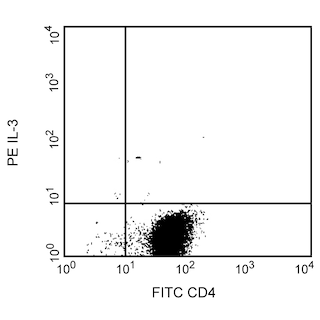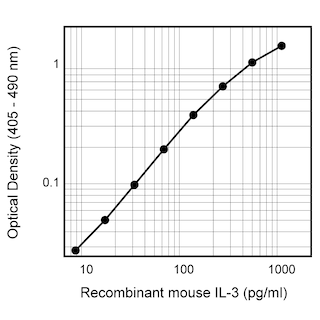-
Training
- Flow Cytometry Basic Training
-
Product-Based Training
- BD FACSDiscover™ S8 Cell Sorter Product Training
- Accuri C6 Plus Product-Based Training
- FACSAria Product Based Training
- FACSCanto Product-Based Training
- FACSLyric Product-Based Training
- FACSMelody Product-Based Training
- FACSymphony Product-Based Training
- HTS Product-Based Training
- LSRFortessa Product-Based Training
- Advanced Training
-
- BD FACSDiscover™ S8 Cell Sorter Product Training
- Accuri C6 Plus Product-Based Training
- FACSAria Product Based Training
- FACSCanto Product-Based Training
- FACSLyric Product-Based Training
- FACSMelody Product-Based Training
- FACSymphony Product-Based Training
- HTS Product-Based Training
- LSRFortessa Product-Based Training
- United States (English)
-
Change country/language
Old Browser
This page has been recently translated and is available in French now.
Looks like you're visiting us from {countryName}.
Would you like to stay on the current country site or be switched to your country?
BD Pharmingen™ Recombinant Mouse IL-3
(RUO)

Recombinant Mouse IL-3
Regulatory Status Legend
Any use of products other than the permitted use without the express written authorization of Becton, Dickinson and Company is strictly prohibited.
Description
Interleukin-3 (IL-3) is a species-specific cytokine which acts on hematopoietic progenitors of every lineage, with the probable exception of cells committed to the lymphoid lineage. It has been referred to as CSF-2 , BPA, megakaryocyte CSF, HCGF and hemopoietin 2. Mouse IL-3 is a 17.2 kD protein containing 140 amino acid residues. Recombinant mouse IL-3 (Cat. No. 554579) is supplied as a frozen liquid comprised of 0.22 µm sterile-filtered aqueous buffered solution, glycerol and bovine serum albumin, with no preservatives. Recombinant mouse IL-3 is ≥ 95% pure as determined by SDS-PAGE, and an absorbance assay based on the Beers-Lambert law. The endotoxin level is ≤ 0.1 ng per µg of mouse IL-3, as measured in a chromogenic LAL assay.
Preparation And Storage
Recommended Assay Procedures
Upon initial thawing, recombinant mouse IL-3 (Cat. No. 554579) should be aliquoted into polypropylene microtubes and frozen at -80°C for future use. Alternatively, the product can be diluted in sterile neutral buffer containing not less than 0.5-10 mg/mL carrier protein, such as human or bovine serum albumin, aliquoted and stored at -80°C. For in vitro biological assay use, carrier-protein concentrations of 1-2 mg/mL are recommended. For use as an ELISA standard, carrier-protein concentrations of 5– 10 mg/mL are recommended. Failure to add carrier protein or store at indicated temperatures may result in a loss of activity. This product should not be diluted to less than 2 μg/mL for long term storage. Carrier proteins should be pre-screened for possible effects in each investigator's experimental system. Carrier proteins may have an undesired influence on experimental results due to toxicity, high endotoxin levels or possible blocking activity.
ELISA Standard: Recombinant mouse IL-3 (Cat. No. 554579) can be useful as a quantitative standard for measuring mouse IL-3 protein levels using sandwich ELISA with the purified MP2-8F8 antibody (Cat. No. 554381) as a capture antibody and biotinylated MP2-43D11 (Cat. No. 554384) as the detection antibody. To obtain linear standard curves, investigators may want to consider using doubling dilutions of recombinant mouse IL-3 from 2000-15 pg/mL to be included for each ELISA plate. For measuring mouse IL-3 in serum or plasma, investigators are highly encouraged to use the BD OptEIA™ Mouse IL-3 ELISA Set (Cat. No. 555228).
Bioassay: Investigators are advised that the Bioassay application is not routinely tested for this material and are highly encouraged to both titrate this material and include appropriate controls in relevant experiments. An activity range of 0.5-5.0x10^9 units/mg, encompassing an
ED50= 2-20 pg/mL, has previously been reported using NFS-60 indicator cells for proliferation, with a unit defined as the amount of material needed to stimulate a half-maximal response at cytokine saturation.
Blocking: Recombinant mouse IL-3 (Cat. No. 554579) can be useful as a blocking control for flow cytometric analysis when used with PE-conjugated MP2-8F8 antibody (Cat. No. 554383). Investigators are advised that the blocking application is not routinely tested for this material. Intracellular cytokine staining techniques and the use of blocking controls are described in detail by C. Prussin and D. Metcalfe.
Product Notices
- Since applications vary, each investigator should titrate the reagent to obtain optimal results.
- Source of all serum proteins is from USDA inspected abattoirs located in the United States.
- Please refer to www.bdbiosciences.com/us/s/resources for technical protocols.
Companion Products



Development References (6)
-
Frendl G. Interleukin 3: from colony-stimulating factor to pluripotent immunoregulatory cytokine. Int J Immunopharmacol. 1992; 14:421-430. (Biology: IC/FCM Block). View Reference
-
Fung MC, Hapel AJ, Ymer S, et al. Molecular cloning of cDNA for murine interleukin-3. Nature. 1984; 307(5948):233-237. (Biology). View Reference
-
Prussin C, Metcalfe DD. Detection of intracytoplasmic cytokine using flow cytometry and directly conjugated anti-cytokine antibodies. J Immunol Methods. 1995; 188(1):117-128. (Methodology). View Reference
-
Urdal DL, Mochizuki D, Conlon PJ, et al. Lymphokine purification by reversed-phase high-performance liquid chromatography. J Chromatogr. 1984; 296:171-179. (Biology). View Reference
-
Weinstein Y, Ihle JN, Lavu S, Reddy EP. Truncation of the c-myb gene by a retroviral integration in an interleukin 3-dependent myeloid leukemia cell line. Proc Natl Acad Sci U S A. 1986; 83(14):5010-5014. (Biology). View Reference
-
Yokota T, Lee F, Rennick D, et al. Isolation and characterization of a mouse cDNA clone that expresses mast-cell growth-factor activity in monkey cells. Proc Natl Acad Sci U S A. 1984; 81(4):1070-1074. (Biology). View Reference
Please refer to Support Documents for Quality Certificates
Global - Refer to manufacturer's instructions for use and related User Manuals and Technical data sheets before using this products as described
Comparisons, where applicable, are made against older BD Technology, manual methods or are general performance claims. Comparisons are not made against non-BD technologies, unless otherwise noted.
For Research Use Only. Not for use in diagnostic or therapeutic procedures.
Report a Site Issue
This form is intended to help us improve our website experience. For other support, please visit our Contact Us page.